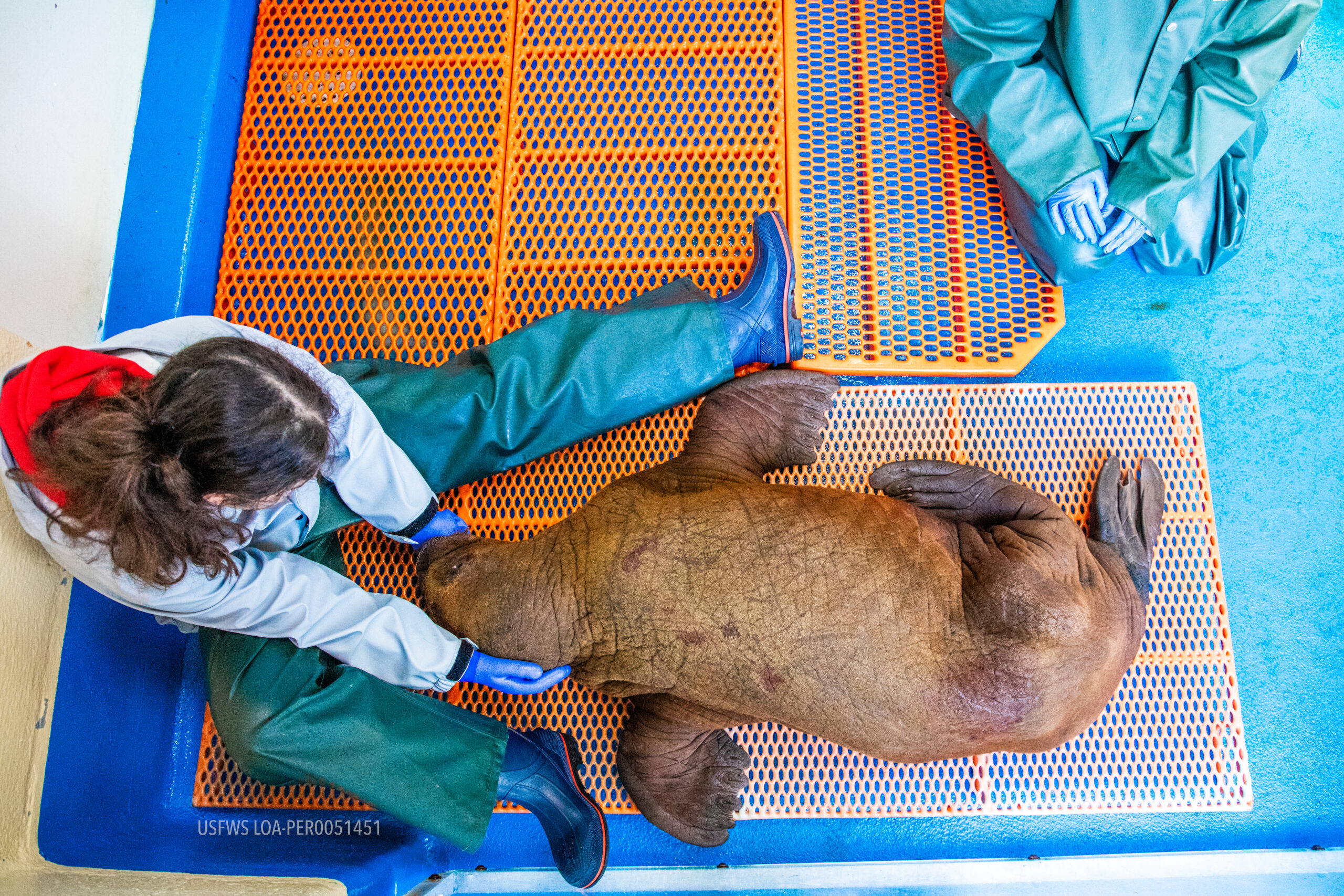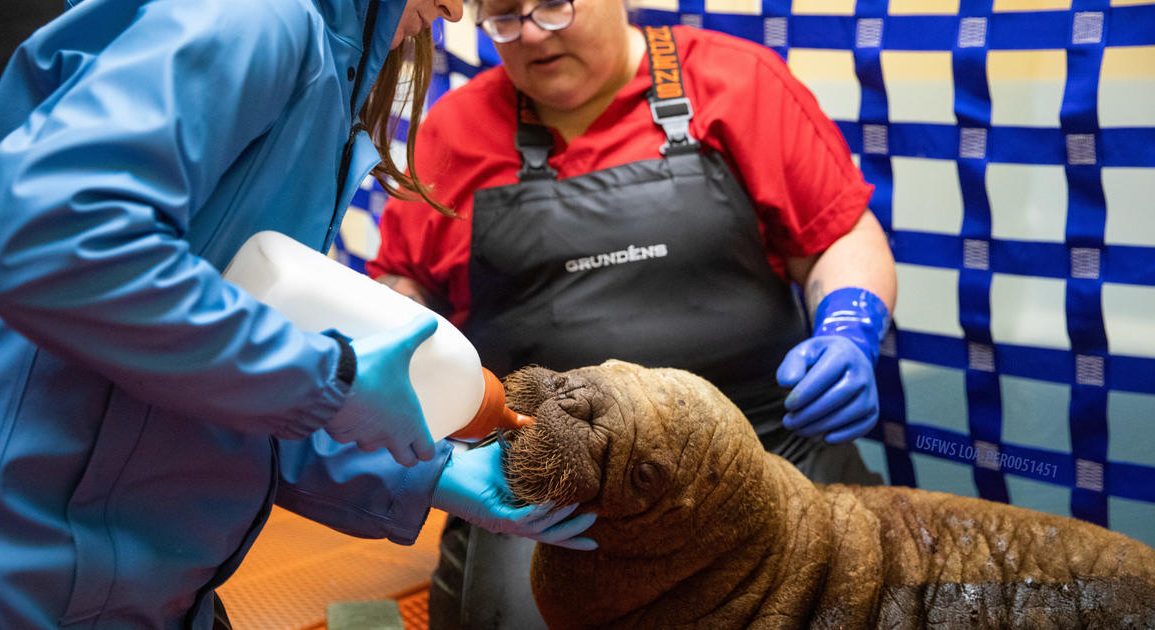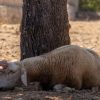A walrus calf, found alone near Alaska’s northernmost city Utqiagvik, has been rescued and is now under care at the Alaska SeaLife Center in Seward, over 800 miles away. The calf, described as “sassy” and alert, weighed nearly 165 pounds upon arrival.
Initial examinations revealed she was malnourished, dehydrated, and had superficial wounds. The exact circumstances leading to her being alone remain unclear, but it is known that a walrus herd had been recently seen in the area.
The center’s spokesperson, Kaiti Grant, mentioned that this rescue comes nearly a year after they took in another male calf who, unfortunately, passed away due to various health issues. The male calf had been found alone and far from the ocean on Alaska’s North Slope. The current calf’s arrival marks only the 11th time in the center’s 26-year history that they have cared for a walrus.

Grant expressed cautious optimism about the new calf’s chances of survival, despite the significant challenges ahead. The calf has responded well to bottle feeding, a positive sign, but the first few weeks are critical to ensure she stabilizes. Given the special needs of walrus calves, which typically require close contact with their mothers, the center’s staff provides round-the-clock care to mimic the necessary comfort and attention.
Walrus calves naturally stay with their mothers for up to two years, relying heavily on physical contact for comfort and security. This intensive care protocol is essential for the calf’s well-being, considering the trauma of being separated from her mother and herd at such a young age.
Pacific walruses are native to the Bering and Chukchi seas, often seen on sea ice and along the coasts and islands of Alaska and Russia. The Alaska SeaLife Center’s efforts to care for the calf reflect its broader mission of supporting wildlife through rehabilitation, research, and education, despite the inherent difficulties and risks involved in such endeavors.

